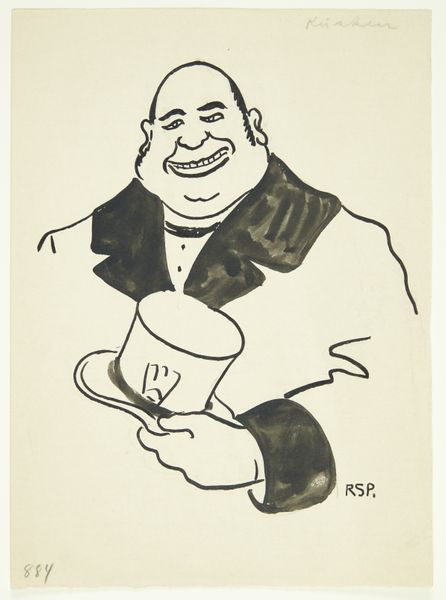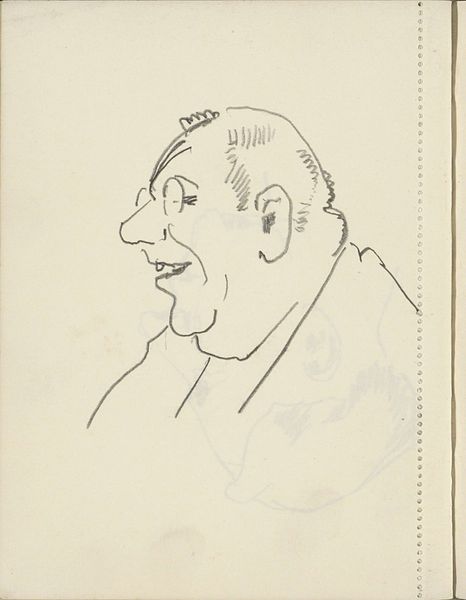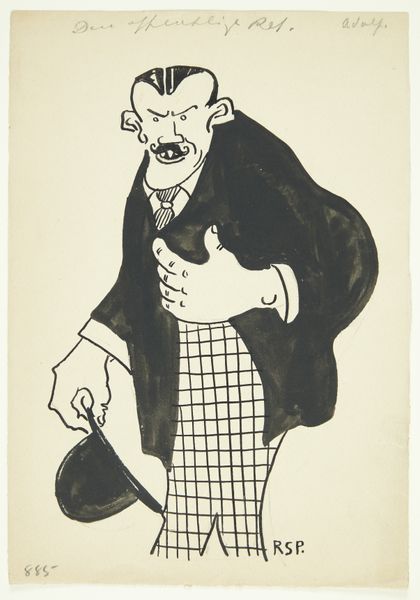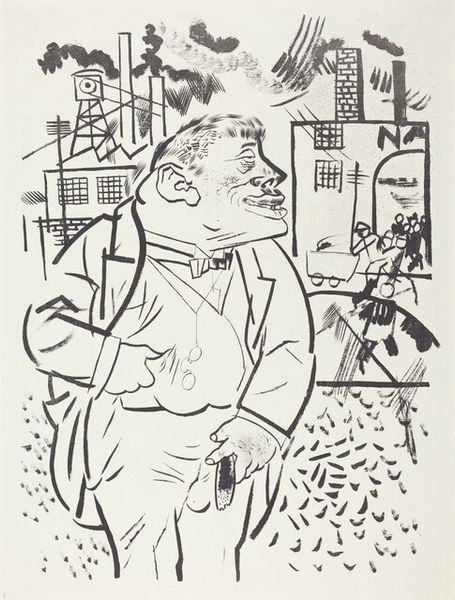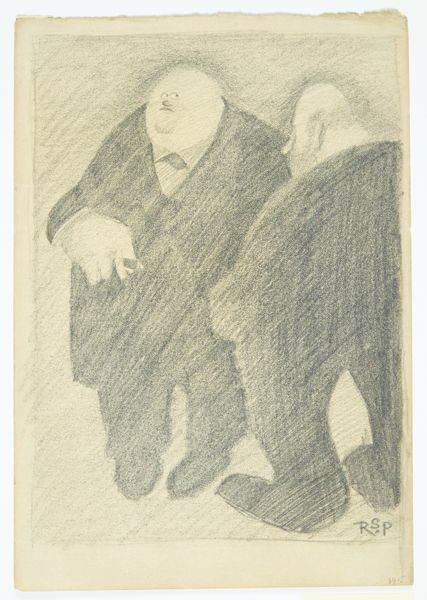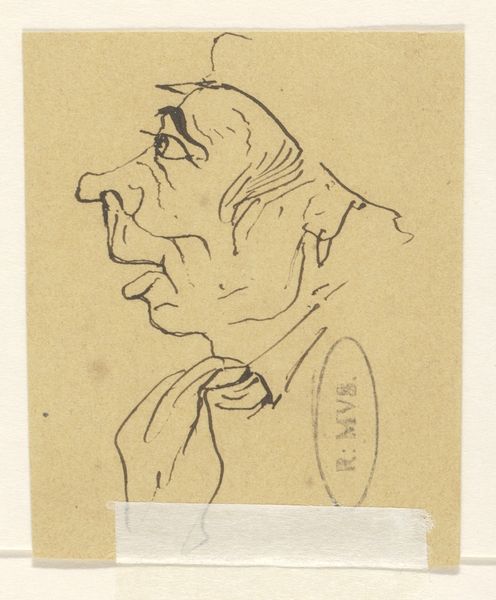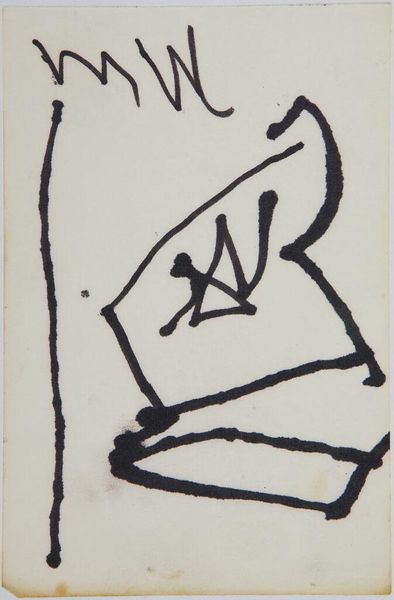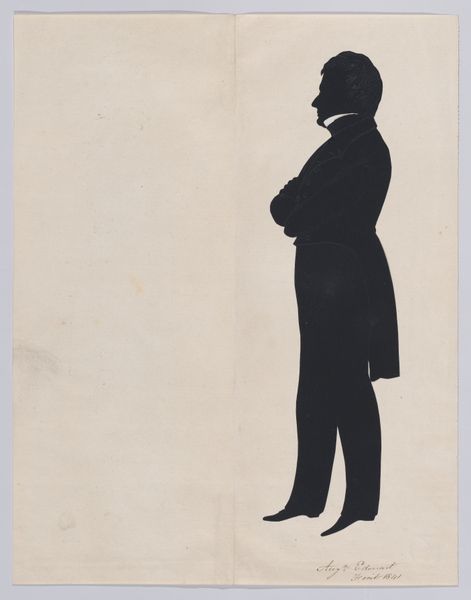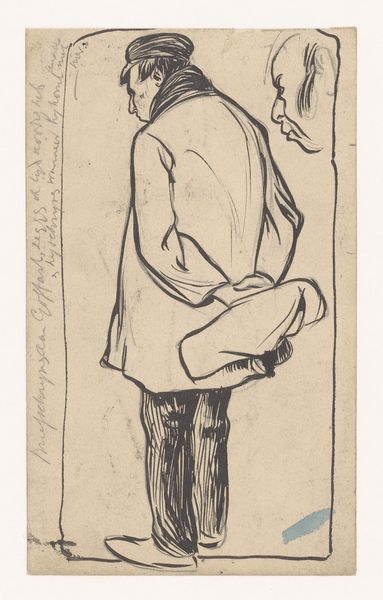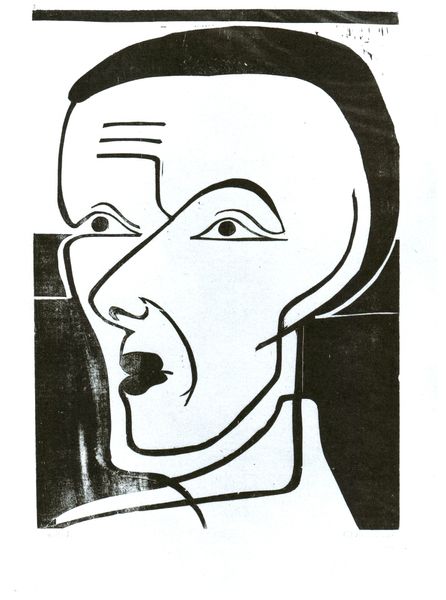
drawing
#
portrait
#
drawing
#
caricature
#
caricature
#
figuration
#
line
#
modernism
Dimensions: 235 mm (height) x 145 mm (width) (bladmaal)
Curator: Welcome. Here we have Robert Storm Petersen’s “Blad til "Dagens flue"" created in 1945. Editor: The bold, confident lines immediately give the impression of an individual sure of himself, perhaps even pompous. Curator: Precisely. Notice how Petersen employs line, especially the density and modulation, to create a portrait with minimal shading. The figure dominates the space, arms crossed imposingly on what seems to be a desk. Editor: That stance is fascinating considering the socio-political context of 1945. We’re at the end of the Second World War; Denmark had just been liberated. Who does this man represent, and what kind of power dynamics are in play here? There's a distinct lack of empathy. Curator: We could read the exaggerated features – the large nose, the tight lips – as purely aesthetic choices contributing to the caricature. The almost geometric construction of his head, contrasted with the fluidity of the lines defining his arms, establishes visual interest. Editor: I see the formal qualities, but I can’t detach them from the era. The harsh lines, the exaggeration… It speaks to a very particular gaze, one that may not be as benign as the artist intended. Caricature has historically been used to demean marginalized groups. Who is being targeted here? Curator: The title does provide an answer – it suggests that the drawing was intended for "Dagens Flue," likely a satirical publication of the time. Contextual clues perhaps tell the tale. Editor: Knowing that changes my interpretation somewhat, though it doesn’t entirely absolve the artwork of potentially problematic readings, does it? It reminds me how crucial it is to approach art history with sensitivity, acknowledging how power operates, especially after 1945. Curator: Yes. There’s much to see and consider here, where technique is used in service of broader communicative or even critical functions, with important context to understand for audiences of today. Editor: Exactly. It’s through understanding the intersections of form, context, and interpretation that we can appreciate both the beauty and the complexities embedded in even the simplest drawings like this one.
Comments
No comments
Be the first to comment and join the conversation on the ultimate creative platform.


